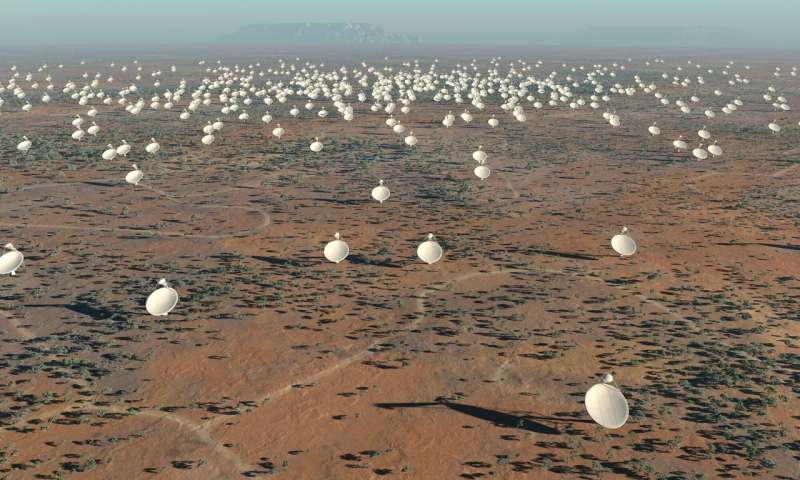This article has been reviewed according to Science X's editorial process and policies. Editors have highlighted the following attributes while ensuring the content's credibility:
fact-checked
preprint
trusted source
proofread
Starlinks are easily detected by radio telescopes

Radio astronomy and satellite communication have a long common history. Advances made in one field have benefitted the other, and our modern era of spacecraft and mobile internet is a product of this partnership. But there are times when the goals of radio astronomy and the goals of communication satellites are in opposition. This is most clearly seen in the development of satellite constellations such as Starlink.
The Starlink constellation differs from earlier communication networks in that it consists of a large number of satellites in low orbit. Currently, there are about 5,000 Starlink satellites, but that number could grow to 40,000 in the next decade. With low orbits, the latency between satellite and ground-based receivers is small, making it more effective for internet communication. And with thousands of satellites, you can access the network from almost anywhere on the planet. But Starlink will make radio astronomy more challenging, as a recent study posted to the arXiv preprint server shows.
This new work is based on test data for the Square Kilometer Array (SKA), which is a radio telescope designed to capture high-resolution images at low radio frequencies. SKA has several science goals, ranging from testing general relativity to mapping neutral hydrogen throughout the cosmos, to studying the atmospheres of potentially habitable exoplanets. It's being constructed in radio-quiet regions of Australia and South Africa and has the potential to revolutionize our understanding of the early universe.

Since SKA will capture large sections of the sky at once, Starlink satellites will be in almost every image it gathers. The authors analyzed data from the Engineering Development Array version 2 (EDA2), which is a prototype array for SLA-Low. Even without the sensitivity of the full SKA array, the team detected radio emissions from Starlink that were both intentional and unintentional. In some cases, the emissions were brighter than the brightest sky objects at low frequencies.
While intentional signals can be mitigated through exclusion zones, where Starlink avoids transmitting when in an observatory's field of view, the unintentional signals are troubling. It is notoriously difficult to shield low-frequency emissions, and any mitigation implemented would only apply to future satellites. The authors conclude that stray signals from Starlink could significantly impact some of the research goals for SKA.
This is not the first time that stray radio signals from Starlink have been detected. An earlier study based on LOFAR also found unintended signals from several satellites. As radio observatories continue to become more advanced and more sensitive, dealing with radio light pollution from satellites. That means we will need to make some hard choices about where the balance is between the convenience of satellite internet and the exploration of the radio sky.
More information: Dylan Grigg et al, Detection of intended and unintended emissions from Starlink satellites in the SKA-Low frequency range, at the SKA-Low site, with an SKA-Low station analog, arXiv (2023). DOI: 10.48550/arxiv.2309.15672
Journal information: arXiv
Provided by Universe Today





















